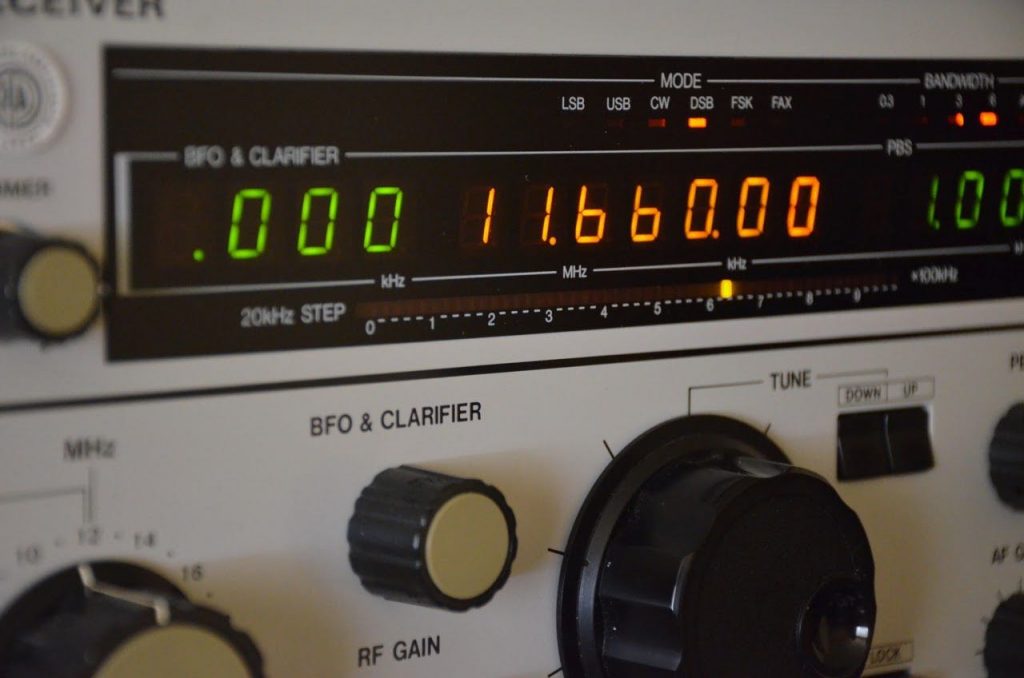 Radio Waves: Stories Making Waves in the World of Radio
Radio Waves: Stories Making Waves in the World of Radio
Because I keep my ear to the waves, as well as receive many tips from others who do the same, I find myself privy to radio-related stories that might interest SWLing Post readers. To that end: Welcome to the SWLing Post’s Radio Waves, a collection of links to interesting stories making waves in the world of radio. Enjoy!
Many thanks to SWLing Post contributors, William Lee, Stana Horzepa, Rich Cuff, and Marty for the following tips:
Capitol Records Building Morse Code (WA1LOU)
This iconic Los Angeles landmark has been emitting secret messages since it opened. However, only those with a keen eye for Morse code can decipher what they say.
It was the former president of Capitol Records, Alan Livingston, who got the idea to have the light on top of the building send out a signal in Morse code. The word chosen for this secret message was “Hollywood.” When the building opened in 1956, Samuel Morse’s granddaughter Leila Morse had the honor of turning the light on.
Read the rest of the story at Atlas Obscura.
Clay’s Corner February 2020 Edition (Northwest Broadcasters)
Some are interpreting this as meaning that – every – AM will be switching to digital leaving a Jillion AM only receivers with nothing to listen to (except for electrical gizmo noise). I give more credit than that to the owners of AM Radio Stations. I would highly doubt if any market would see all of their AM’s go digital. Perhaps in an ownership that had two AM’s it might make sense to have one of each.
[…]Other question is, what will the company that owns HD Radio (EXPERI) want to extract from the owner of an AM station that’s willing to put everything on the line and go all digital?
The bottom line is there appears to be a lot of interest in this proposal. The FCC’s process will likely draw a number of comments, pro and con. This will be an interesting process to watch. I can say one thing, never did I ever dream that we would be debating this issue![…]
Seven mysterious sounds science has yet to solve (Popular Science)
The Buzzer
Numbers stations—shortwave radio transmissions of monotone coded messages—are inherently creepy. But call sign UVB-76 has outcreeped them all by playing the same jolting tone from Russia since 1982. Similar broadcasts are useful for sending messages where snoops might intercept digital comms, so “the Buzzer” could simply assist spies. But it plays far fewer words and digits than confirmed espionage outlets, so some suspect it’s a science project that bounces radio waves off the ionosphere to detect solar flares. The most intriguing theory posits that it’s a doomsday device that will go silent should Russia suffer a nuclear attack, thus triggering retaliation.
My theory is that these mysterious sounds are actually the intro to a Pink Floyd song, possibly from their 1969 album Ummagumma. Because the early Floyd albums, before Dark Side of the Moon, are no longer heard on-air, the Russians stole this music knowing we’d never notice. Ooh, gotta go… I hear the black helicopters coming…[…]
iHeartMedia laid off hundreds of radio DJs. Executives blame AI. DJs blame the executives. (Washington Post)
When iHeartMedia announced this month it would fire hundreds of workers across the country, the radio conglomerate said the restructuring was critical to take advantage of its “significant investments … in technology and artificial intelligence.” In a companywide email, chief executive Bob Pittman said the “employee dislocation” was “the unfortunate price we pay to modernize the company.”
But laid-off employees like D’Edwin “Big Kosh” Walton, who made $12 an hour as an on-air personality for the Columbus, Ohio, hip-hop station 106.7 the Beat, don’t buy it. Walton doesn’t blame the cuts on a computer; he blames them on the company’s top executives, whose “coldblooded, calculated move” cost people their jobs.[…]
Amateur radio skills prove useful during bushfire emergencies (ABC News)
Amateur radio enthusiasts have proved themselves useful during the recent bushfires after traditional telecommunication channels broke down.
Amateur radio, also known as ham radio, is a skill and international hobby whereby enthusiasts use specific radio frequencies to communicate with each other.
In Australia, users must complete an exam to obtain a license through the Australian Communications and Media Authority (ACMA).
It was volunteers with these skills who were called in to assist during the recent New South Wales bushfires.
Neil Fallshaw is vice-president of WICEN NSW Communications, a group of volunteers with amateur radio licenses who can help in emergency situations.
He said about 30 members provided a temporary radio system in the Bega, Cobargo, Narooma, and Bermagui areas after some of the local radio infrastructure was damaged or had lost power.
“We deployed one of our radio repeaters on the mountains. We put a radio repeater system on that mountain to cover a portion of the south coast,” Mr Fallshaw said.
He said that radio system assisted the NSW Volunteer Rescue Association and Bega Valley Shire Council staff to communicate from bushfire-affected towns like Bermagui and Cobargo.
“They normally use just mobile phones, but the mobile phones in the area were down because of fire damage,” Mr Fallshaw said.[…]

